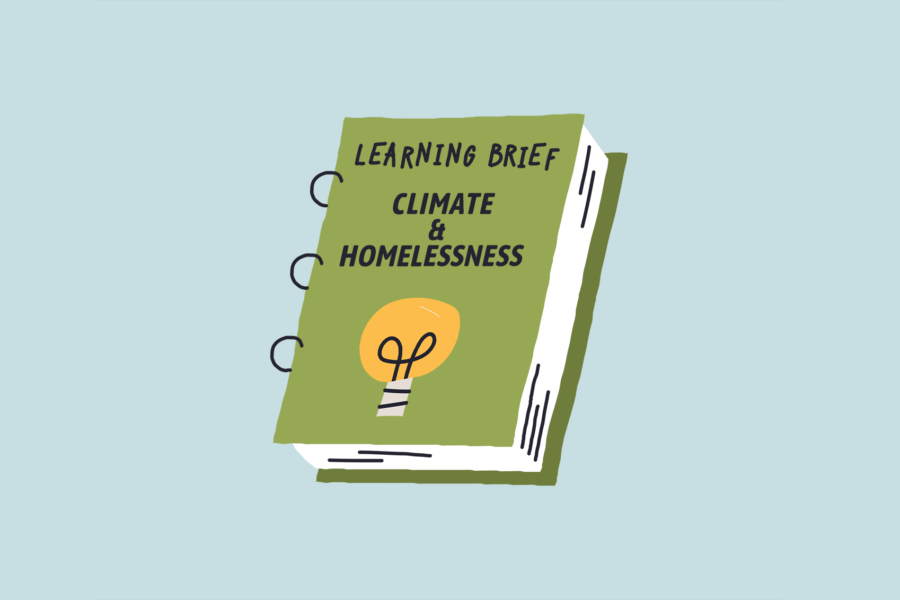Climate change disproportionately endangers vulnerable populations, including those experiencing homelessness, while exacerbating the conditions that drive homelessness. This intersection presents profound implications that demand immediate attention.
The intersection of homelessness and climate change presents several key concerns:
- the vulnerability of people experiencing homelessness to the impacts of climate change and resulting health implications
- the disproportionate impact of climate change on marginalized populations and the exacerbation of social inequities
- climate change-related drivers of homelessness
- long-term consequences of climate change and migration patterns
These areas can form a comprehensive framework for understanding and addressing the complex challenges that arise at the intersection of homelessness and climate change.
Immediate Health Implications
People experiencing homelessness (PEH) are among the most vulnerable to extreme weather events. They face immediate and severe exposure to natural disasters and extreme temperatures. While PEH can often adapt and plan accordingly for regular seasonal changes, everyone — particularly those with limited access to information — is vulnerable to getting caught off guard by less predictable weather patterns and events that arise due to climate change.
Extreme weather driven by climate change has profound health implications for those experiencing homelessness. Extreme heat poses severe health risks and can be life-threatening, and rates of heat-related illness are on the rise throughout the majority of the U.S. (OCCHE, 2023). Unhoused people are more susceptible to heat stress conditions, as seen in California, where PEH represented about 13% of heat-related hospitalizations from 2017 through 2021, despite comprising fewer than half a percent of the state’s population (Reese, 2023). Heat threats are amplified in urban areas, where a significant portion of the population experiencing homelessness in the U.S. resides (HUD, 2022). Higher temperatures occur in major cities due to limited green space and highly concentrated structures absorbing and re-emitting heat (EPA, 2023).
PEH are also more vulnerable to the adverse effects of declining air quality associated with climate change. Individuals with chronic respiratory conditions, which PEH are disproportionately likely to have, are most impacted by climate change-driven air pollution (Ramin & Svoboda, 2009; ASPE, 2021). Elevated rates of asthma and chronic obstructive lung disease, coupled with increased exposure to air pollutants like ozone and particulate matter, heighten health and mortality risks for the population experiencing homelessness. Altogether, climate change poses a critical threat to public health and can further compound existing health inequities associated with homelessness.
Exacerbation of Social Inequities
Climate change will disproportionately affect vulnerable populations in the U.S. who are at greater risk of experiencing homelessness, who are most likely to live in areas projected to face the most severe impacts of climate change. For example, Black and African American individuals are more likely to live in areas with the highest projected increases in climate-related mortality rates and childhood asthma diagnoses due to climate-driven air pollution compared to other racial groups (EPA, 2021). American Indian and Alaska Native individuals are more likely to currently reside in areas where the highest percentage of land is projected to be inundated due to sea level rise. Hispanic and Latino individuals, as well as those with low incomes and those without a high school diploma, are more likely to live in areas predicted to experience the greatest loss in labor hours due to climate-related high-temperature days.
Social inequities will worsen in the aftermath of catastrophic weather events. Lower-income households — who tend to live in more affordable homes that are older, less well maintained, and/or located in areas at risk of floods — may be more likely to suffer damage to their homes during natural disasters (Van Zandt, 2012; Peacock, 2015). Those with limited financial resources, who often cannot afford homeowners or flood insurance and do not qualify for disaster loans, struggle to recover stable housing after displacement. Low-value homes often cannot be replaced for the same price, leaving low-income households and renters with limited options — particularly in areas with pre-disaster housing shortages. Eviction rates also surge in the aftermath of severe natural disasters (Brennan et al., 2021), introducing additional challenges for renters to find new housing after a disaster. For many people on the margins, extreme weather events due to climate change can serve as a tipping point into homelessness.
Displacement and Housing Supply Shortages
Climate change also fuels homelessness and contributes to the affordable housing crisis by displacing people from their homes and reducing the supply of safe housing. Over 20 million people worldwide are displaced from their homes each year due to extreme weather events (IPCC 2022, 7.2.6.1). Catastrophic disasters, such as wildfires and hurricanes, often leave displaced people without safe homes to return to after the extreme weather event. As the cumulative toll of displacement grows due to more frequent natural disasters, extreme weather driven by climate change will likely become a more common driver of housing instability and homelessness. For example, recent findings suggest that roughly 2% of PEH in California — where the highest number of structures were lost to wildfire in 2022 (OCCHE, 2023) — had lost their housing due to a fire or another natural disaster (UCSF Benioff Homelessness and Housing Initiative, 2023).
Natural disasters, such as wildfires and hurricanes, can destroy or severely damage housing units, further limiting housing supply. In the U.S. alone, an estimated one in ten residential properties were damaged by natural disasters in 2021 (CoreLogic, 2022). This trend is particularly stark in wildfire-prone regions, such as the western U.S., where residential structure loss due to wildfires increased by 246% between 1999 and 2020 (Higuera et al., 2023). Extreme weather and increases in high-temperature days can also disrupt and delay residential construction.
Migration Patterns Impacting Housing Availability and Infrastructure
Long-term consequences of climate change, such as droughts and rising sea levels, will reshape where people can or choose to live, leading to voluntary migration among those who can afford it, potential entrapment of vulnerable populations in high-risk areas, and challenges accommodating larger populations in safe havens. In addition to immediate disaster-related displacements, significant voluntary migration is predicted to occur in which people opt to move out of dangerous areas to avoid future disasters. Meanwhile, individuals with limited resources, including those experiencing homelessness, may have fewer choices and remain in high-climate-risk areas. Significant and sudden in-migration to low-risk areas will likely strain resources and infrastructure in a manner that impacts housing supply and affordability, transportation systems, and labor markets, and contributes to gentrification in climate havens (NLC, 2022).
Conclusion
Recognizing the unique vulnerabilities faced by people experiencing or at risk of homelessness in the context of climate change is critical for developing policies, prevention-focused plans, and interventions. This brief highlights four key areas at the intersection of climate change and homelessness, forming the foundation of a framework to comprehensively understand and approach these multifaceted challenges.
The consequences of climate change have already begun to disproportionately affect the most vulnerable groups globally, including those without stable housing. There is an opportunity to mitigate the exacerbation of social disparities and protect individuals and communities from the effects of displacement, migration, and housing shortages. Plans, practices, and policies that both provide immediate support to those already experiencing homelessness and take proactive steps to prevent climate change-induced homelessness will serve as worthwhile investments in the resilience and sustainability of our communities.




